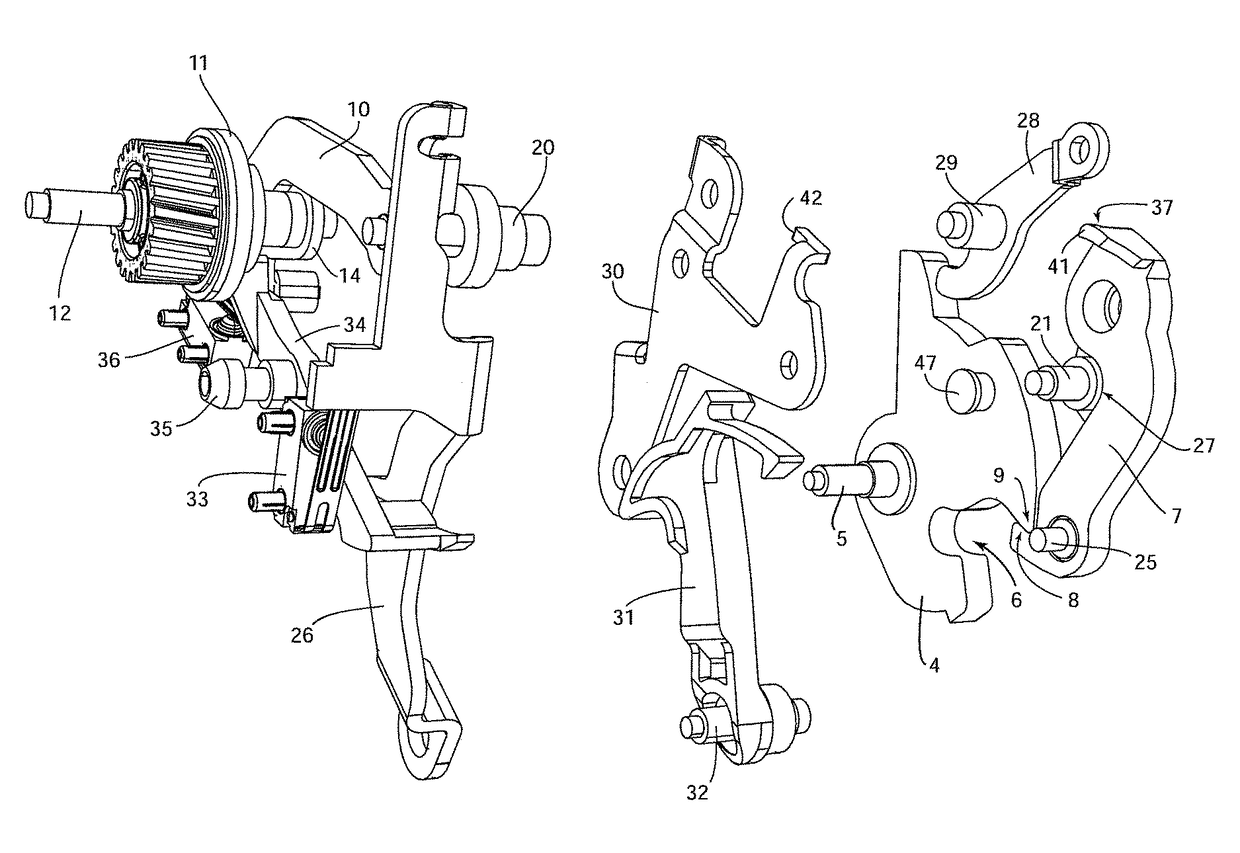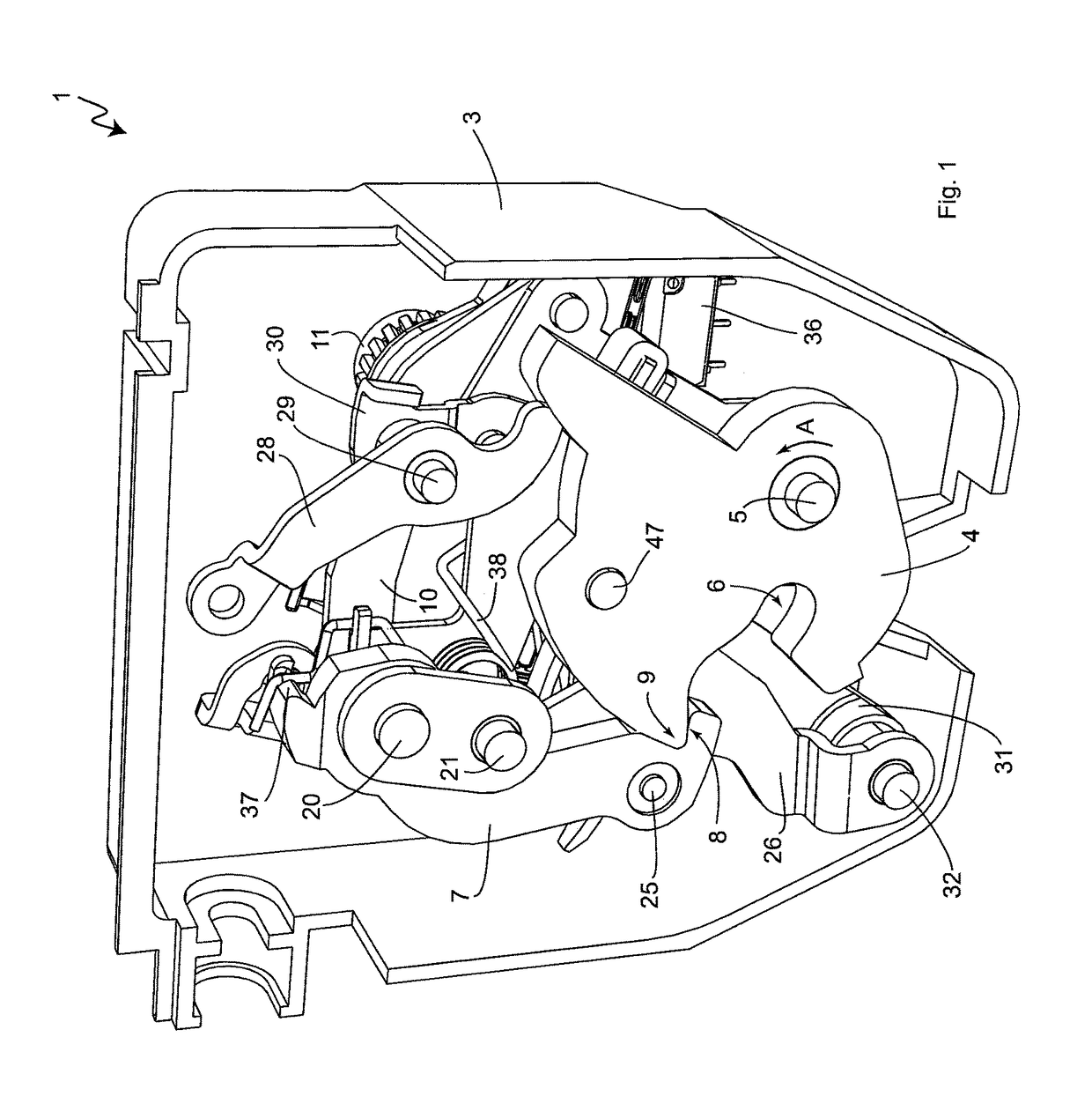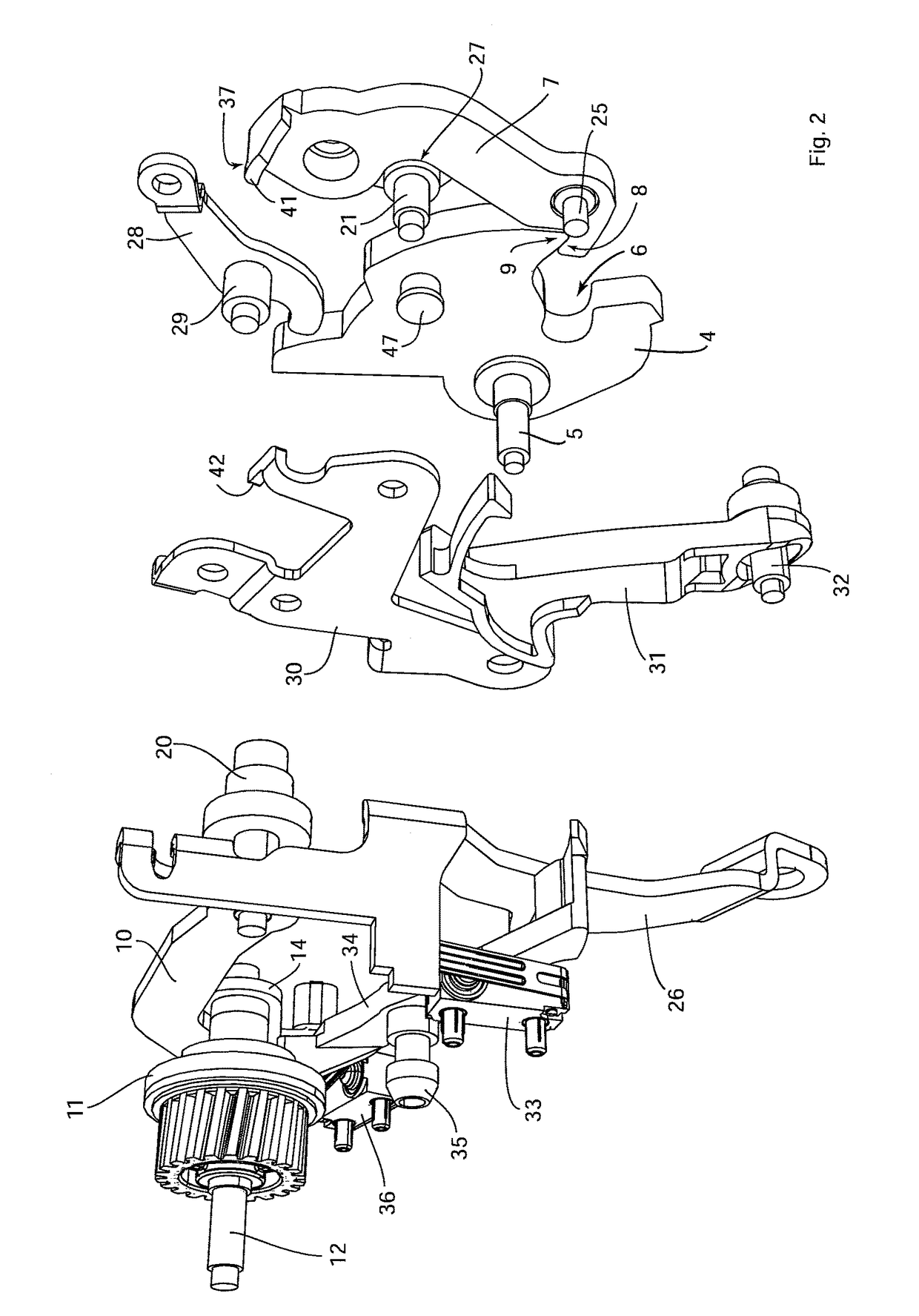Motor vehicle door lock
a technology for motor vehicles and door locks, applied in the direction of electrical locking circuits, mechanical devices, lock applications, etc., can solve the problems of adverse effects on the perceived comfort, and reducing the power requirements of the door locking mechanism, so as to improve the comfort and quality of the locking mechanism and its functionality, reduce the effect of power requirements and reduced overall construction cos
- Summary
- Abstract
- Description
- Claims
- Application Information
AI Technical Summary
Benefits of technology
Problems solved by technology
Method used
Image
Examples
Embodiment Construction
[0047]FIG. 1 contains a perspective view of the motor vehicle door locking mechanism “1”, in particular a tailgate lock assembly, in accordance with the invention. The motor vehicle door lock “1” that can be mounted on the tailgate of a motor vehicle, engages with a locking element “2”, which is only schematically portrayed in FIGS. 4 and 13, for the purpose of closing and locking the tailgate. The locking element “2” could be designed as a locking bolt or locking clip and be mounted on the vehicle frame. The vehicle door locking mechanism “1” comprises a housing element “3”, which is used to mount and house additional components of the vehicle door locking mechanism “1”. In order to prevent visual obstructions, the housing element “3” is merely portrayed in FIG. 1. As can be seen in FIGS. 1 to 5, the motor vehicle door locking mechanism “1” also comprises a rotary latch “4”, which is rotationally mounted on the housing element “3” around a locationally fixed rotary axis “5” and is ...
PUM
 Login to View More
Login to View More Abstract
Description
Claims
Application Information
 Login to View More
Login to View More - R&D
- Intellectual Property
- Life Sciences
- Materials
- Tech Scout
- Unparalleled Data Quality
- Higher Quality Content
- 60% Fewer Hallucinations
Browse by: Latest US Patents, China's latest patents, Technical Efficacy Thesaurus, Application Domain, Technology Topic, Popular Technical Reports.
© 2025 PatSnap. All rights reserved.Legal|Privacy policy|Modern Slavery Act Transparency Statement|Sitemap|About US| Contact US: help@patsnap.com



